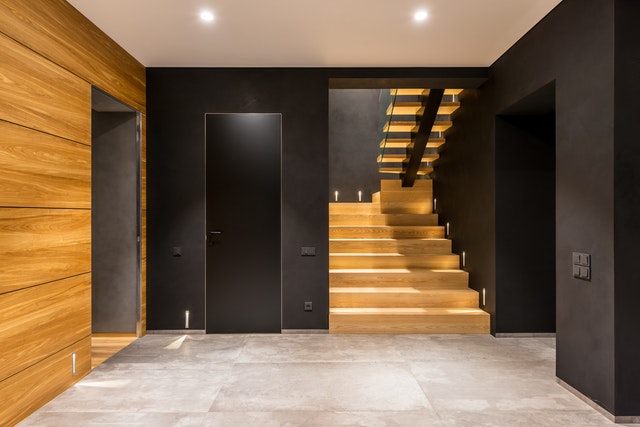The structural and decorative individual parts of a building are referred to as components.
Constructive elements enclose the structure and are functionally and statically necessary parts.
Decorative elements are not a necessary architectural form or ingredient with the intention of creating effects, disguising or enriching the construction. They are used to structure and decorate buildings.
Constructive components

The character of a building is largely determined by the structure of the enclosing elements. The various components are not only used from a functional point of view but also often serve as a vehicle for expression. There are no limits to the choice and use of material, shape, decor, and structural elements.
Ground
The soil is not considered in this case as a foundation but characterizes the surface on which a building is entered. It is always in tension with the natural subsurface and, like other elements, becomes a vehicle of expression. Homeowners and architects should ask the services of https://madison.aaacwildliferemoval.com/raccoon-removal/ to check any entry for wildlife.
Wall
The wall is an upright, more or less articulated surface. When these surfaces meet, edges and corners are created.
Wall shapes can hide or highlight the construction. With wall material, value has always played a major role. Rare, difficult to obtain or expensive materials were considered elements of prestige and were used for representation. With the appropriate wall material, the interior can be closed off or connected to the exterior in a transparent manner.
The shape, size and position of the wall openings fulfill the actual purpose as well as meaning. In addition to simple, unadorned wall incisions, the entrance is given a special message with the help of various decorative shapes, elevations, steps, etc.
Roof and dome
The roof is considered to be the functionally determined upper space closure of a building but has also always been used to shape the building.
Stairs
Stairs are initially only technical aids for overcoming a difference in height and, in contrast to ramps, are structured by steps. One distinguishes
- straight,
- coiled,
- single or multiple barrel,
- single or multi-storey stairs.
Stairways and interior stairs form since the Renaissance and especially Baroque highlights representative staircase architecture.
Vault
Vaults are curved ceilings made of stone, concrete or reinforced concrete.
